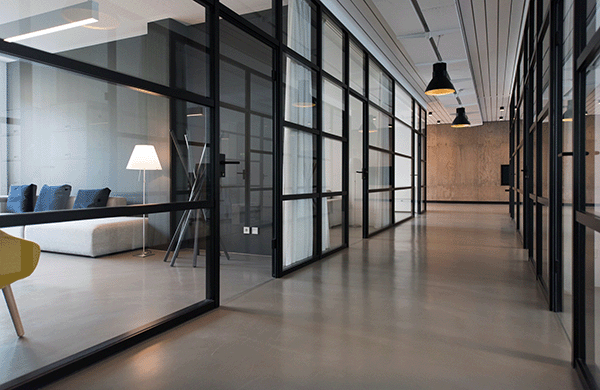
The Coronavirus (Covid-19) has had a staggering impact on our world, the effects of which have undoubtedly changed all facets of society, including the way businesses operate. One market that has taken a stunning hit by the pandemic is the commercial real estate market.
Before the pandemic, commercial properties were a relatively reliable investment – there were always businesses whether new or old that needed a place to operate and conduct their daily trade. Even as online shopping increased in popularity, commercial spaces were still the norm, with many people still opting to conduct business or make personal purchases in person. At the close of 2019, there was an estimated 160 million square feet of office space under construction.
The onset of the Covid-19 pandemic has since changed everything. Masks now complement everyday outfits whether for business or pleasure. Work from home has become a preferred lifestyle and online and pick-up orders have become the new mode of shopping.
What does all of this mean for commercial real estate?
6 Ways COVID Impacted Commercial Real Estate
1. Remote working is the new normal
The shift to remote work was a natural reaction to the spread of the highly contagious virus that required constant sanitization of spaces and a 6-feet-apart mandate.
With some companies choosing to remain remote indefinitely, the utility of office spaces is in flux. Prior to the pandemic, layoffs and vacated premises did not always spell doom. Subleased spaces entering the market meant an opportunity for landlords to find new tenants. However, the persistence of remote work, coupled with the highest unemployment rate since the Great Depression created a vacuum in the market.
More than 20 months later, companies are just returning to their commercial office spaces. For many companies that have recognized its flexibility and cost-effectiveness, remote work remains a reality for many people. A 2020 survey of 317 CFOs showed that 74% will permanently move 5% of their staff to remote work after the pandemic. This trend suggests that landlords will also need to be more flexible to accommodate their tenant's hybrid conditions as well as drive demand for office spaces that remain vacant.
2. People are moving away from metro areas
Businesses and people alike are moving away from busy, crowded metropolitan areas. Besides the likelihood of contracting the virus in a heavily populated place, there are other factors for this. For example, large cities like New York and Los Angeles enforced numerous mandates and lockdowns to stop the spread.
Due to the shutdowns, businesses had to close, causing many to lose revenue or even go bankrupt. In response, they’re moving out of those cities to places with lesser restrictions. But where are they going? Simply put, they’re moving to areas with lower tax rates. Even though the economy has opened back up, many haven’t recovered all their losses from the pandemic. It doesn’t help that taxes nationwide are likely to increase. The proliferation of work-from-home(WFH) and hybrid roles also gives geographic flexibility - offering an alternative to living in expensive metropolitan simply to be closer to work.
3. The hospitality industry took a big hit
Hotels and resorts were filled with tourists and families looking to relax or explore a new place. But fear of contracting the coronavirus impacted traveling everywhere, causing a dramatic decline in hotel reservations. Hotels that housed conference spaces were hit with a double-whammy. Zoom became the new meeting/conference room with breakout rooms becoming the new exhibit hall.
4. Shift to online shopping
Online shopping is taking over and changing the way we buy goods. It’s a convenient way of purchasing items without leaving the house and risk infection.
Even though many businesses were already moving into e-commerce, the COVID pandemic simply accelerated it. It’s proven to be effective and successful, which is why more retailers are investing in improving their online stores to make them more accessible and user-friendly.
5. Growing demand for warehouses, fulfillment centers
At the height of the pandemic, lockdowns, overcrowding, and panic shopping at grocery stores made online shopping a key necessity for many Americans. Online shopping not only had its pre-pandemic convenience appeal but was also a good way to help prevent the spread of the virus. This increased need for online goods had a positive impact on the industrial sector of commercial real estate. Many retailers rose to the challenge and expanded their e-commerce presence while smaller companies upscaled their delivery capabilities. This resulted in an increased demand for tenants in industrial properties such as manufacturing, storage, and distribution facilities. The disruption to supply chains caused by the pandemic also drove the demand for these types of commercial spaces since many retailers needed spaces to store their inventory.
6. Brick-and-mortar stores closures
With shopping shifting online and the pandemic still ongoing, we saw significant losses in the number of brick-and-mortar stores. Lockdowns forced retail and restaurants to operate at limited capacity or close completely – both of which crucially impacted sales.
As businesses suffered losses and could not keep up with rent, thousands of them filed for bankruptcy. As a result, 2020 saw the closure of over 12,000 stores, leaving many vacant retail spaces.
Many lawsuits ensued due to these closures, with retailers and other companies claiming that the government-imposed shutdowns constitute force majeure, which would allow them to forego their payment obligations. Naturally, landlords have fought back in an attempt to enforce the terms of their lease. These lawsuits may continue into 2022, especially if new shutdown orders are implemented.
How Commercial Real Estate has Adapted
Adding more amenities
Landlords and real estate agents are responding to the change in traditional commercial spaces with innovative amenities. For example, before the pandemic, people looked for spaces with valuable features such as fitness centers, conference rooms, and dining options. But now, they prefer amenities such as open-air environments, touchless technology, and wellness facilities. While it can be structurally and logistically challenging, landlords are willing to consider adding some of these amenities to increase tenant demand.
Accommodating tenant needs
The pandemic has highlighted how rigid lease agreements can operate to the detriment of the landlord. To accommodate the changing landscape, some property management experts have suggested a move to short-term leases and rent adjustments. These alternative arrangements would act as an added layer of protection for landlords whose tenants are no longer able to meet their obligations. It will be necessary for all stakeholders such as landlords, lenders, contractors, tenants, and borrowers to review force majeure clauses in their contracts moving forward. This way terms can be negotiated to protect both parties should business operations be affected by similar events.
Adapting technology
Many realtors and property sellers are leaping into the digital world. For example, property showings have traditionally been done in-person but are now moving to a virtual format. Some companies have incorporated virtual showing rooms with live links to product descriptions and support.
Repurposing old properties
In this market, nobody is going to settle for an unappealing property. As a result, many property managers are opting to remodel their venue for a different purpose than it was initially intended.
For example, those who own old shopping centers are turning them into grocery stores, schools, or housing. This could be an opportunity for managers to appeal to retailers needing inventory space.
Get the Expertise You Need for Your Real Estate Case
In addition to disputes between businesses and landlords, we’re seeing conflicts between businesses and insurance companies. For example, some businesses claim that their insurance coverage should cover their losses. The results from all these lawsuits could have lasting implications for businesses, landlords, and insurance companies, especially as more businesses adopt a remote-first policy.
We will likely continue to see lawsuits emerging in the commercial real estate sector as we move into a post-pandemic world. Make sure you’re working with a real estate expert who can provide guidance on real estate disputes. Contact us to learn more about how Evidence Solutions can help you with your next real estate case.

